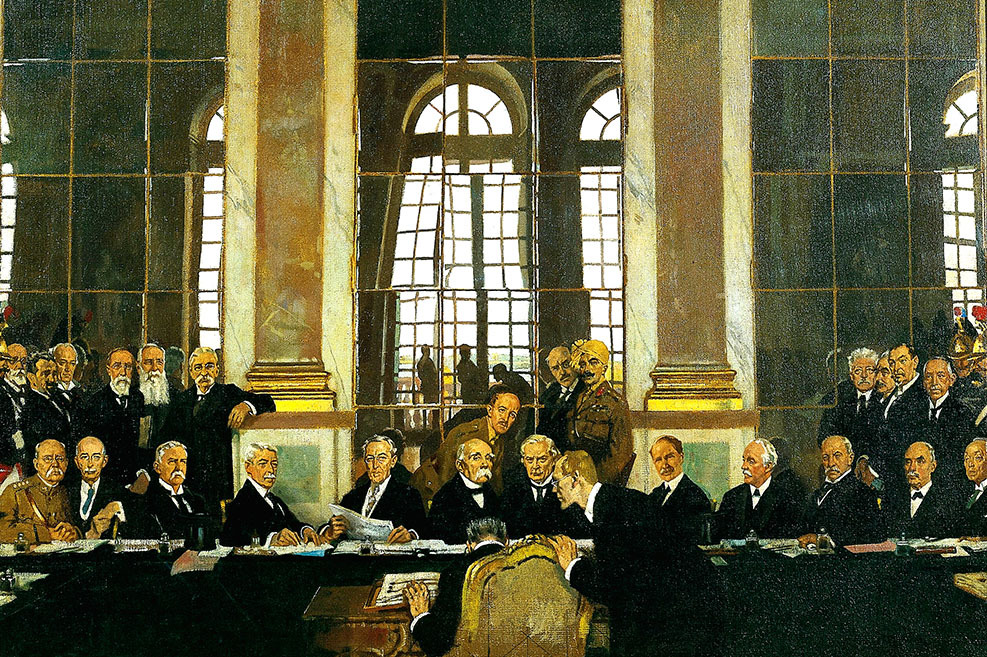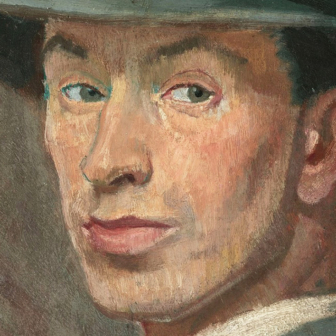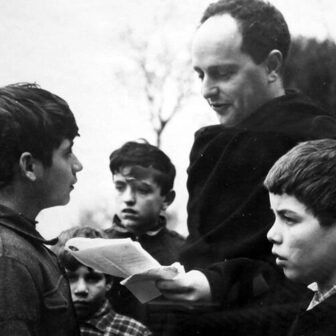A Perfidious Distortion of History: The Versailles Peace Treaty and the Success of the Nazis
By Jürgen Tampke | Scribe | $45.00
In July 1972 Jürgen Tampke, a doctoral student at the Australian National University, gave a seminar to staff and students entitled “The Revolution of 1918–19 in the Ruhr.” He argued that the Communist-inspired strikes of that period eventually proved fatal to the Weimar Republic, and suggested that there was, at that early stage, a possible sociopolitical solution to Germany’s malaise. It was an unusual and ambitious topic for an Australian doctoral student at a time when most historians would have followed the conventional wisdom in assuming a link between an “unfair” Versailles peace treaty and the collapse of the Weimar Republic.
More than four decades later, Tampke has returned to the problem of post-Versailles Germany in a clearly written and engaging book that goes back to the early years of the twentieth century as it attempts to turn historical mythology on its head. This is a historian whose knowledge of the period and the issues, and long years of study and reflection are almost unrivalled. He deserves to be read with respect and admiration.
One of the most remarkable war memorials I know of is found in a small park off the main thoroughfare of the delightful French town Peronne, which the Australians liberated from German control in September 1918. On a small plinth, so that the statue is almost at eye level for the viewer, lies the body of a dead French soldier. A mother, one assumes, leans across the dead man’s body, regarding the viewer with despair and rage. Her right arm is flung forward, fist tightly clenched, to strike at those who killed her son.
I have long thought that this war memorial says more eloquently than anything else that the first world war was not over, that for the victims of that calamitous war there was much unfinished business. Tampke is of that view, too, but he begins his book by asking who was responsible for that war, and who must be held to account for the suffering and misery that it caused. His first chapter, “Imperial Germany,” takes the long view, beginning with Bismarkian Germany. It is a deft account of the arrogance of the German ruling caste and its overweening self-confidence.
Most military historians, more interested in the war than in the peace, have lightly assumed that the harshness of the Versailles peace treaty aroused such anger in Germany’s political, military and social classes that another war was almost inevitable. Tampke refutes this view with deliberate and careful arguments. He doesn’t much like any of his cast of characters, but he reserves a special loathing for Woodrow Wilson and Australian prime minister Billy Hughes.
The question of war reparations must, of course, take centrestage. Tampke makes the point that the Allies had painted themselves into a corner. To encourage commitment to the sacrifices every citizen was asked to make during the conflict, leaders told their people that Germany would pay for the conflict and its effects. But when the war ended, the realisation dawned that exacting complete repayment would entail the utter destruction of the German state. Versailles imposed extreme and harsh reparation payments on Germany that the Allies (Billy Hughes possibly excepted) had no intention of exacting.
Through a close reading of the interwar German economy, Tampke shows that Germany was not in a tailspin of economic collapse, but maintained a growing and healthy economy to the benefit of all its citizens. Perhaps readers would be surprised to know, as I was, that the legendary German hyperinflation lasted only for a period of months, not years, and that economic stability was restored by the end of 1923. Tampke also surprises when he shows how little research John Maynard Keynes undertook before writing The Economic Consequences of the Peace, a world bestseller, which derailed any possibility of an accurate understanding of Versailles as the Nazis rose to power. This is heady stuff.
Moving beyond the Nazi years, Tampke looks at the emergence of the “European idea” that united long-term enemies France and Germany, and – perhaps too confidently in view of Brexit – at an era of ongoing harmony and friendship. He argues that bad history stands in the way of good policy, and A Perfidious Distortion is certainly an important reminder of the importance for historians of getting it right.
The book is dedicated to “Bruce Kent, teacher and friend.” Kent, a long-serving ANU academic who supervised Tampke’s doctorate, must look back with considerable pride on his role in setting Jürgen Tampke on the lifetime of study and research of which this book is just one outcome. A Perfidious Distortion of History is not only a pleasure to read but also presents an important argument and is as bold as its title indicates. •




